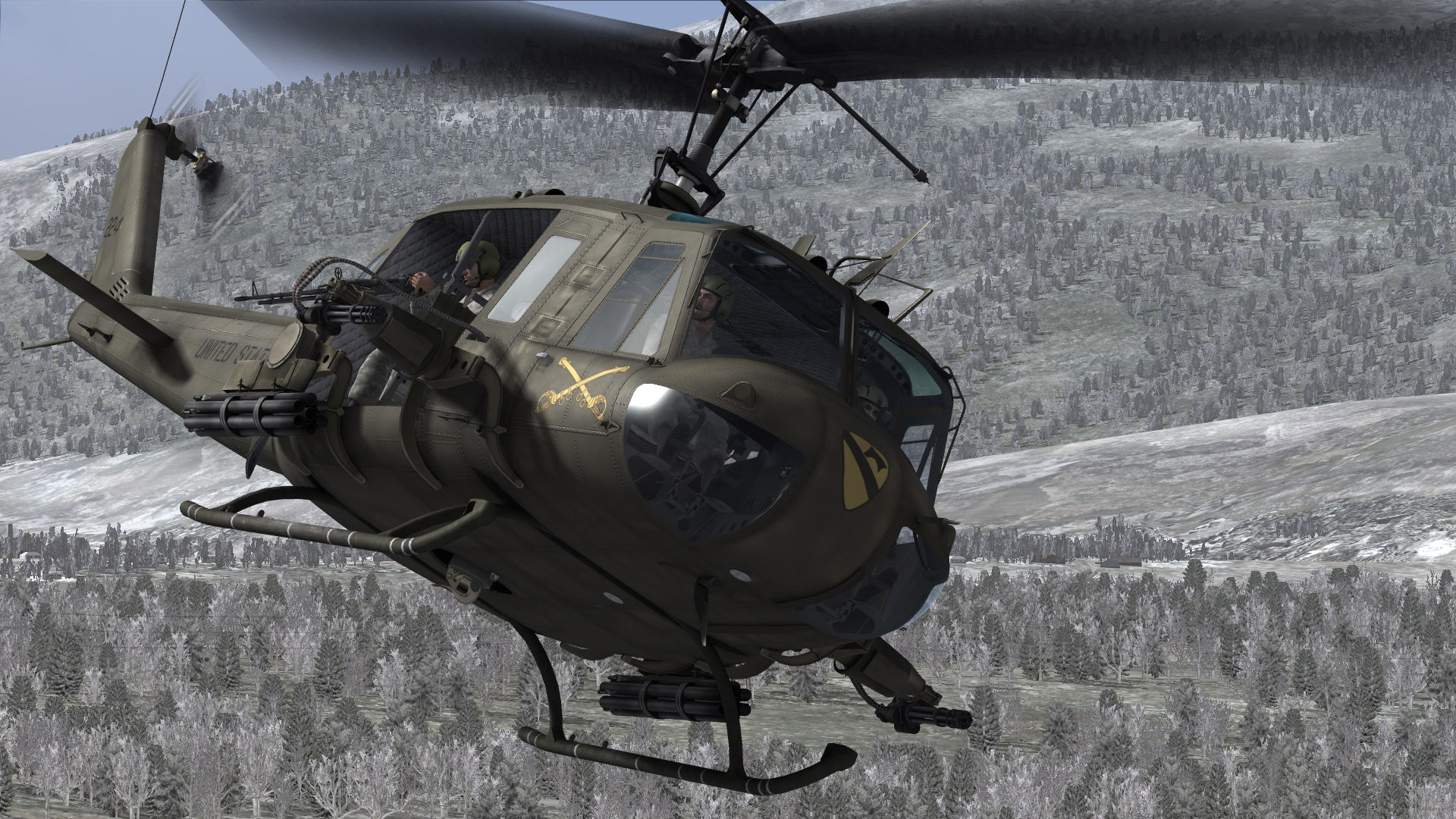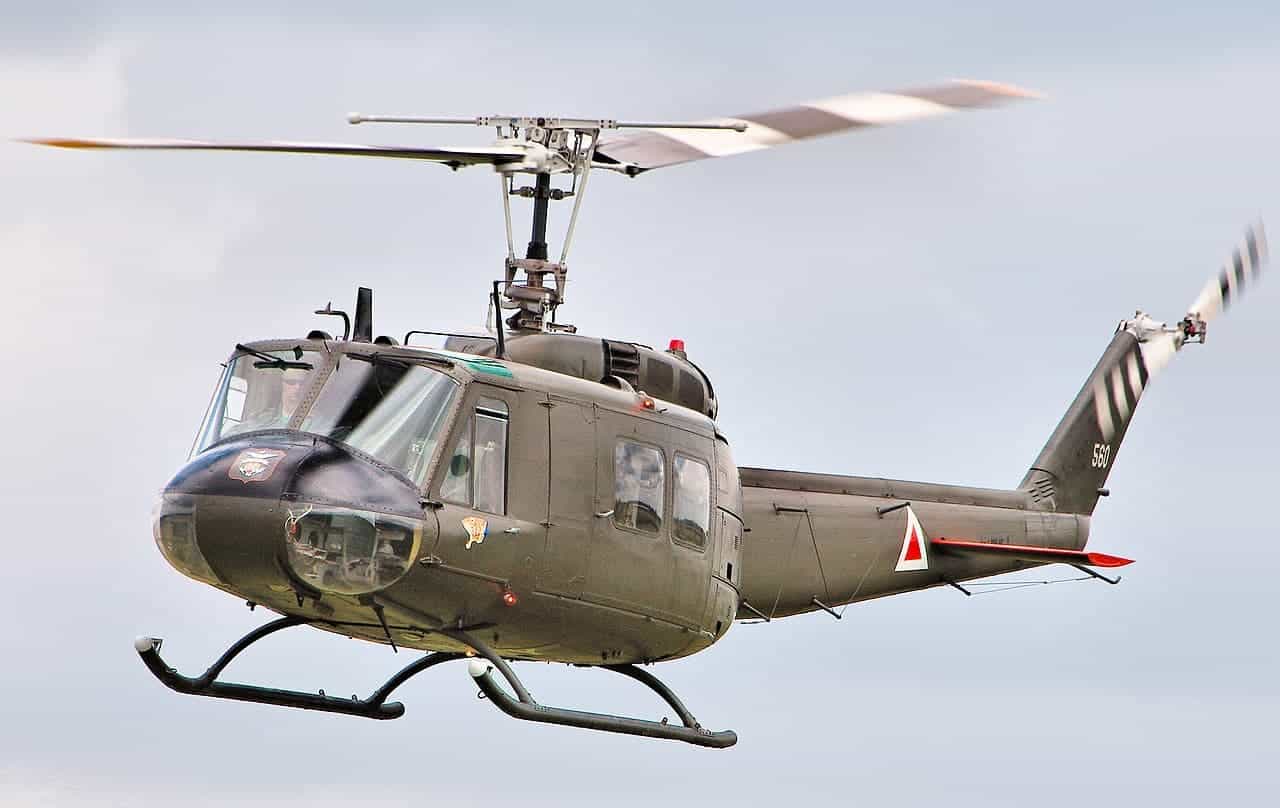In over five decades of rotary-wing aviation, many helicopters have come and gone within the US Armed Forces, but the H-1 “Huey” still stands strong. Heavily upgraded, there are two existing variants of the Huey still in service, the UH-1Y Venom and AH-1Z Viper, both of which serve in the Marine Corps.
Manufactured by Bell Helicopter/Textron Inc., the UH-1N is the military version of the Bell 212, first designed and flown in 1956. It entered service with the US Army in 1959 as a utility helicopter.
Although officially designated the Iroquois, it was known as the “Huey” in the Army, deriving from its original classification, the HU-1A. These initial A models first saw service with the 101st Airborne, the 82nd Airborne, and the 57th Medical Detachment; the latter of which would be the first unit to employ the Huey in Vietnam in 1962.

Huey in ‘Nam
As the war in Vietnam progressed, so did the Hueys’ necessary involvement. The initial A model’s shortcomings soon gave way to the UH-1B with a longer cabin and more powerful engine, with further developments that led to the C and D variants.
The “Charlie” or C model was outfitted with external armament and operated as a gunship. The D variant was an expansion of the B, gaining 41 inches (104 cm) of cabin space and increasing its capacity to fifteen feet (4.5 meters), which allowed it to accommodate two pilots, two door gunners, and an entire infantry squad. It was this D model that would see extensive use in the early stages of the Vietnam War.

In 1962, it was the Marine Corps’ turn to adopt the UH-1E version of the Huey, modified to their specifications. The Huey performed every conceivable role in the war, including troop transport duties, general support, MEDEVAC, search and rescue, and gunship duties. Rocket-armed Hueys were referred to as “Hogs,” whereas gun-carrying Hueys were dubbed “Cobras.” Troop transport versions were nicknamed “Slicks” since they held no weapon stations on either side.
In 1966, the Army began receiving the UH-1G “HueyCobra,” which took on the gunship roles of its predecessors. Though it had many shared components with its utility brother, the new Cobras were designed exclusively as gunships, mounting stubby wings for weapons and carrying a 20mm cannon anti-infantry under the nose.
Throughout the war, 7,000 Hueys were deployed, accumulating an astounding 7.5 million flight hours, largely attributed to those in Army service, with a majority of the 40,000 helicopter pilots serving in Vietnam flying Hueys. Hueys evacuated more than 90,000 patients from the battlefield, saving many lives that otherwise would not make it out in time. Of the 7,000, around 3,000 were lost to combat operations, along with over 2,700 pilots, crew, and passengers.
Around 3,000, mostly H variant Hueys, survived the war and formed the backbone of the military’s post-war helicopter fleet. In the late stages of the war, the Marine Corps bought the more powerful twin-engine UH-1, which would enter service as the UH-1N and continue serving as a utility helicopter for another 30 years. While the Corps continued the development of the Huey, the Army began a search for a new helicopter that ushered in the era of the UH-60 Black Hawk.

Old Man Huey
The Black Hawk would replace the Huey as the Army’s primary utility helicopter, though, as in many cases, it would retain a number for training purposes well into the 21st century. The AH-1 Cobras received similar upgrades as the UH-1N, in the form of new engines and an improved M197 20mm cannon, becoming the AH-1J SeaCobra.

The Army went yet another route and developed the AH-64 Apache attack helicopter, while the Marines were forced to continue with the AH-1 due to funding issues. The AH-1T and the AH-1W were later upgraded, known as the “Whiskey Cobra,” which included improved avionics, engines, and armament.

Again denied the Apache in 1996, the Corps instead awarded a contract to Bell Helicopter, the H-1 Upgrade Program, to modernize and increase commonality for their aging fleets of UH-1Ns and AH-1Ws. This program resulted in the new and improved UH-1Y Venom and AH-1Z Viper, which both have 84 percent common components, decreasing maintenance costs. These new versions began delivery in 2006 and have seen action in Afghanistan.
The latest Viper and Venom models signify that the Huey is one of the few, if not only, systems to have variants run from A to Z. With at least ten more years of service ahead, the Huey helicopters will serve well beyond six decades of continuous service for the United States Armed Forces.









